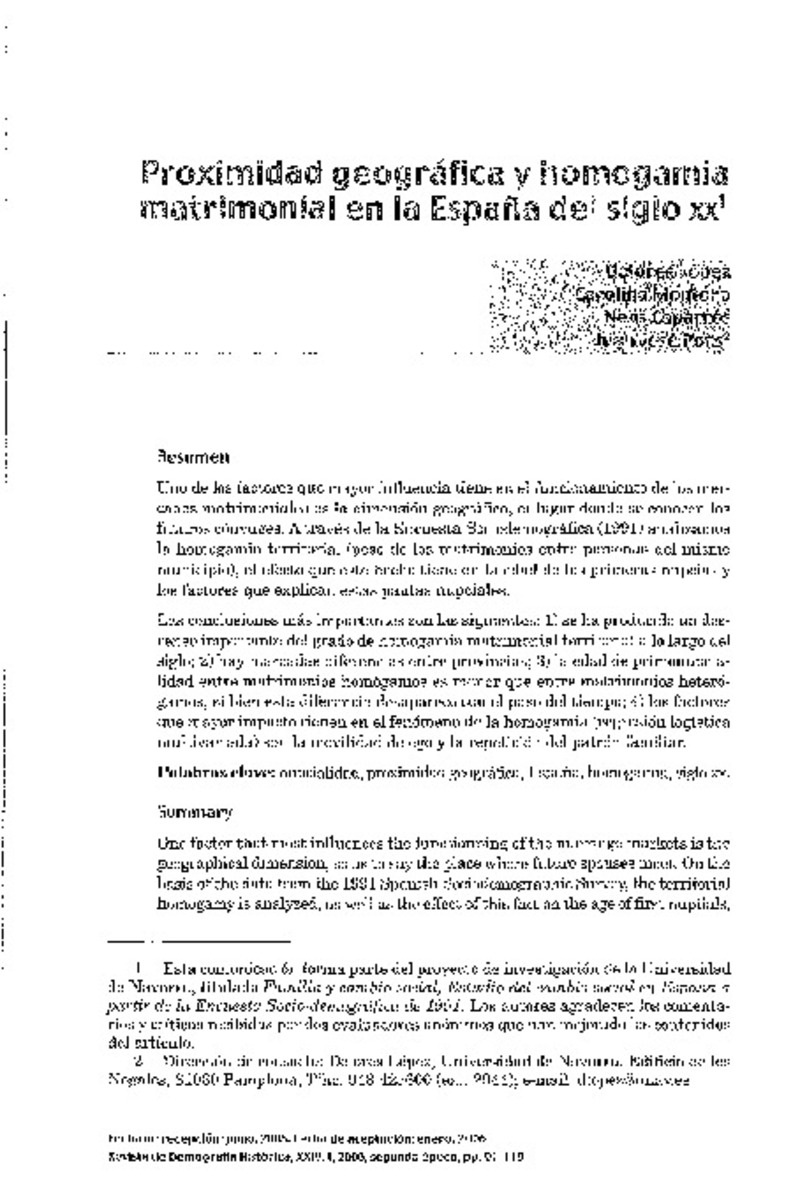Proximidad geográfica y homogamia matrimonial en la España del siglo XX
Palabras clave :
Materias Investigacion::Geografía
Nupcialidad
Proximidad geográfica
España
Homogamia
Siglo XX
Nuptiality
Geographical proximity
Spain
Homogamy
20th Century
Nuptialité
Proximité géographique
Espagne
Homogamie
xx_e Siecle
Fecha de publicación :
2006
Editorial :
Asociación de Demografía Histórica
Nota:
La Revista de Demografía Histórica – Journal of Iberoamerican Population Studies publica artículos
en acceso abierto bajo la licencia de Creative Commons 4.0.
Cita:
López-de-Heredia, D. (Dolores); Montoro-Gurich, C. (Carolina); Caparrós-Civera, N. (Neus); et al. "Proximidad geográfica y homogamia matrimonial en la España del siglo XX". Revista de Demografía Histórica – Journal of Iberoamerican Population Studies. 24 (1), 2006, 91 - 120
Aparece en las colecciones:
Estadísticas e impacto
0 citas en

0 citas en

Los ítems de Dadun están protegidos por copyright, con todos los derechos reservados, a menos que se indique lo contrario.










